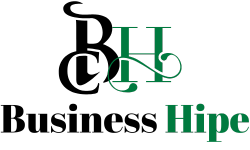7 Hidden Secrets Only Soutaipasu Users Know

Ever felt like life pulls you in too many directions at once? That’s where soutaipasu comes in. It’s not just a fancy term it’s a way of thinking that helps people and organizations create balance without losing momentum. At its core it is about adapting to change while keeping your foundation steady. Whether you’re managing a career, leading a team, or just trying to juggle everyday commitments, soutaipasu gives you a framework to align priorities and move forward without burning out. In today’s fast-changing world, this principle has become more relevant than ever.
Table of contents
- What is Soutaipasu?
- How Does it Work in Real Life?
- Why is Soutaipasu Important Today?
- Where Did Soutaipasu Come From?
- How Can You Apply It for Personally?
- Is Soutaipasu Only for Individuals, or Do Organizations Use It Too?
- What Happens If You Ignore Soutaipasu?
- Can Soutaipasu Shape the Future?
- Conclusion
- FAQs
What is Soutaipasu?
That’s the first thing most people ask. Soutaipasu is a concept rooted in balance, adaptation, and interaction between systems whether human, cultural, or technological. The word itself has gained traction in discussions around modern strategies for growth, innovation, and sustainable practices. Think as the “bridge” between stability and transformation. It’s about finding a rhythm where different forces don’t collide but instead move in harmony.
In practical terms, soutaipasu applies across fields from business models that balance risk and reward, to social systems that encourage collaboration, and even in personal lifestyles where work and rest need to coexist without constant conflict.
How Does it Work in Real Life?
Imagine you’re juggling multiple priorities your career, your health, and your relationships. Soutaipasu functions as the framework that allows these parts to complement one another rather than pull you in opposite directions.
In business, this might look like companies investing in digital innovation while preserving human-centered values. In education, it could be the integration of technology without losing personal mentorship. In everyday life is as simple as meal prepping on Sundays so your weekdays aren’t chaotic.
The principle behind it is adaptability. Instead of forcing a rigid path works by continuously adjusting almost like a dance where each step anticipates the next.
Why is Soutaipasu Important Today?
That’s the million-dollar question. We live in a time defined by rapid change new technologies shifting economies, and evolving cultural expectations. It provides a framework to avoid burnout and chaos in the face of constant transition.
For businesses, it prevents outdated practices from clashing with innovation. For individuals, it’s the antidote to overwhelm helping people balance ambition with wellbeing. On a global scale, soutaipasu encourages collaboration between different countries industries and communities creating pathways that prioritize sustainability and mutual progress.
Where Did Soutaipasu Come From?
Soutaipasu isn’t just a concept it’s a philosophy born from the rare fusion of Eastern mindfulness and Western innovation. It draws on the East’s deep respect for harmony, balance, and interconnectedness, blending it seamlessly with the West’s pursuit of progress, precision, and efficiency.
What makes Soutaipasu truly unique is its fluid adaptability. It doesn’t confine itself to rigid rules or dogmatic systems. Instead it embraces contextual intelligence the idea that every situation carries its own rhythm and requires its own equilibrium. In one setting, the Soutaipasu approach may lean toward introspection and flow; in another, it may favor structure and strategic motion.
This dual nature gives Soutaipasu its strength a living framework that evolves with time culture and purpose. It’s not about choosing between opposites but about mastering the art of balance amid complexity.
How Can You Apply It for Personally?
Here’s where it gets practical. Applying to your life starts with identifying where imbalance exists. Are you working too much? Neglecting your health? Overcommitting socially? The principle invites you to zoom out, assess your commitments, and re-balance.
A soutaipasu mindset could mean:
- Setting realistic work boundaries.
- Blending physical activity into daily routines.
- Creating flexible goals rather than rigid checklists.
- Seeking out partnerships that enhance rather than drain your energy.
Once applied, soutaipasu reshapes how you approach problems. Instead of viewing obstacles as roadblocks, you start seeing them as opportunities to reconfigure and realign.
Finding balance in life isn’t just a concept it shows up in everyday choices, like the variety and harmony of flavors in the Happy Garden menu which demonstrates how thoughtful planning creates satisfaction and wellbeing.
Is Soutaipasu Only for Individuals, or Do Organizations Use It Too?
Both. Soutaipasu is just as effective for organizations as it is for individuals. In the corporate space, it often shows up as adaptive leadership—where leaders balance financial goals with team morale, or innovation with long-term sustainability.
For example, a company might integrate principles by adopting flexible work schedules, merging data-driven decision-making with human insight, or balancing profit margins with environmental commitments.
The result? Organizations that are more resilient, better equipped for change, and trusted by both employees and customers.
What Happens If You Ignore Soutaipasu?
That’s a fair question. Without it, imbalance quietly takes root. For individuals, that imbalance can manifest as burnout, declining health, or relationships that lose their strength. For businesses, it shows up as outdated thinking, disengaged teams, and ultimately, a loss of direction when change arrives uninvited.
Ignoring it isn’t just inefficient it’s dangerous. A life or organization without balance becomes fragile, unable to bend when the world shifts. Over time, even the strongest foundations can crumble if adaptability and awareness are neglected. True sustainability isn’t about doing more it’s about aligning purpose with progress, finding stability in motion, and creating the kind of balance that fuels long-term growth and fulfillment.
Can Soutaipasu Shape the Future?
Absolutely and in more ways than one. The future isn’t something we can predict with precision, but Soutaipasu gives us a compass instead of a map. It doesn’t guarantee calm seas, but it teaches us how to navigate the waves.
From climate action and workplace innovation to personal growth and well-being, Soutaipasu empowers people and organizations to stay resilient while embracing change. It’s not just another fleeting buzzword it’s a forward-thinking mindset that equips us to make smarter, more adaptive choices in an unpredictable world.
You also like: Lifestyles Size Finding Balance That Fits Your Life
Conclusion
If you think about it, soutaipasu is less about lofty philosophy and more about practical survival in a complex world. It’s the art of balance, the science of adaptation, and the strategy of resilience.
Whether you’re navigating personal growth, leading a team, or making long-term investments gives you a framework to adjust without losing direction. In a time where change is constant, soutaipasu might just be the steady rhythm that keeps everything moving forward without collapsing under the weight of chaos.
FAQs
Q1: What exactly does soutaipasu mean in simple terms?
Soutaipasu means balance through adaptability—finding ways for different forces in life, business, or society to work together instead of clashing.
Q2: Is soutaipasu a philosophy or a practical tool?
It’s both. While it has philosophical roots it is applied daily in leadership, decision-making, and personal lifestyle choices.
Q3: How can businesses benefit from soutaipasu?
Businesses use to adapt to change without losing core values. It helps balance profit goals with innovation, employee satisfaction, and sustainability.
Q4: Can soutaipasu improve personal wellbeing?
Yes. it helps individuals manage stress, balance work and personal life, and make decisions that support long-term health and fulfillment.





